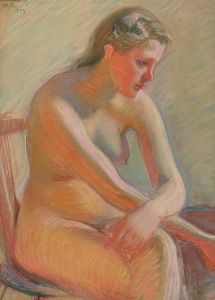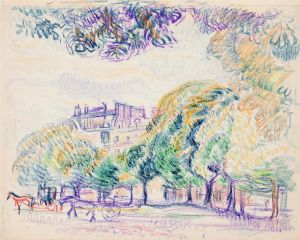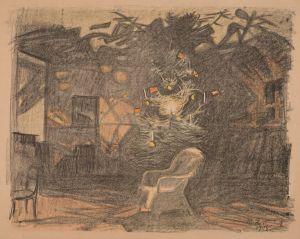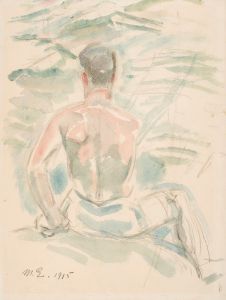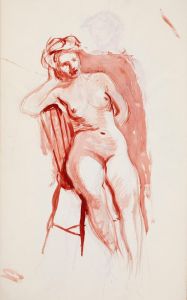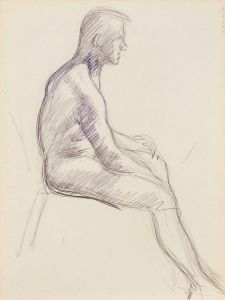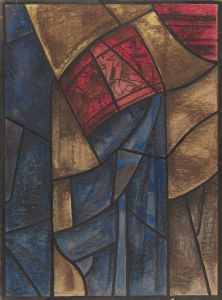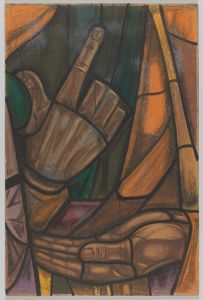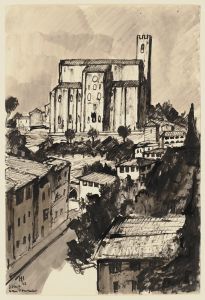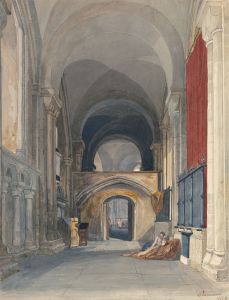
Interior of a Church in Paris
A hand-painted replica of Magnus Enckell’s masterpiece Interior of a Church in Paris, meticulously crafted by professional artists to capture the true essence of the original. Each piece is created with museum-quality canvas and rare mineral pigments, carefully painted by experienced artists with delicate brushstrokes and rich, layered colors to perfectly recreate the texture of the original artwork. Unlike machine-printed reproductions, this hand-painted version brings the painting to life, infused with the artist’s emotions and skill in every stroke. Whether for personal collection or home decoration, it instantly elevates the artistic atmosphere of any space.
Magnus Enckell was a Finnish symbolist painter, born on November 9, 1870, in Hamina, Finland, and he became one of the most prominent figures in Finnish art at the turn of the 20th century. Enckell was known for his exploration of symbolism and his contributions to the Finnish art scene, particularly during the Golden Age of Finnish Art. His works often depicted themes of spirituality, mythology, and the human condition, rendered in a style that evolved from dark, muted tones to more vibrant and colorful expressions.
"Interior of a Church in Paris" is one of Enckell's notable works, although specific details about the painting, such as its creation date and current location, are not widely documented. The painting reflects Enckell's interest in capturing the spiritual and atmospheric qualities of sacred spaces, a theme that recurs in his oeuvre. Enckell's fascination with religious and mythological subjects is evident in his broader body of work, where he often sought to convey the inner experiences and emotions associated with such themes.
Enckell's education and artistic development were significantly influenced by his studies in Paris, where he attended the Académie Julian. The exposure to French art and the Symbolist movement played a crucial role in shaping his artistic vision. During his time in Paris, Enckell was influenced by the works of artists such as Pierre Puvis de Chavannes and Gustave Moreau, who were known for their symbolic and allegorical content. This influence is reflected in Enckell's approach to painting, where he often employed symbolism to convey deeper meanings and emotions.
The depiction of church interiors was a subject that allowed Enckell to explore the interplay of light and shadow, as well as the serene and contemplative atmosphere of these spaces. In "Interior of a Church in Paris," Enckell likely utilized his keen sense of color and composition to create a work that captures the quiet majesty and spiritual ambiance of the church setting. His use of light would have been instrumental in highlighting the architectural details and the ethereal quality of the interior space.
Enckell's contribution to Finnish art extends beyond his paintings. He was an influential figure in the Finnish art community, participating in exhibitions and contributing to the development of modern art in Finland. He was a member of the Septem group, which aimed to promote modern art in Finland and included other notable artists such as Ellen Thesleff and Verner Thomé. Enckell's work and his involvement in the art community helped pave the way for future generations of Finnish artists.
Despite the lack of extensive documentation on "Interior of a Church in Paris," Magnus Enckell's legacy as a pioneer of Finnish symbolism and his impact on the art world remain significant. His ability to convey complex emotions and spiritual themes through his art continues to be celebrated and studied by art historians and enthusiasts alike.






